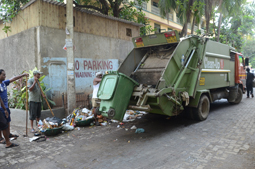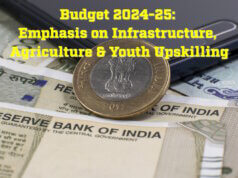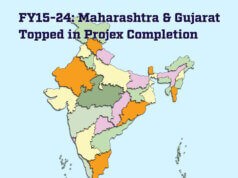
Public money is being plundered in the name of solid waste management and improper handling of solid wastes is creating health hazard and contaminating the groundwater. With rapid urbanisation, the problem is only going to compound in coming years, thus it is time that urban planners gave high priority to solid waste management, says Birju Mundra of Sankalp Sangharsh Foundation and Vini Agro Tech Pvt. Ltd.
India with second highest population in the world of 1.2 billion people produces one of the largest solid wastes on earth. However, this has not yet caught the attention of the public — not because the problem has been tackled meticulously but because public awareness about the problem is still limited with only a handful of activists raising alarm bells. In fact, if one looks at it very closely, the amount of public money plundered in the name of solid waste management may equal, if not exceed, the amount swindled in 2G scam or Coalgate scandal. But unlike 2G or Coalgate scam where money looted was pocketed by a handful of politicians, bureaucrats and businessmen, money under the garb of municipal solid waste management is swallowed by umpteen number of corporators, local authorities and businessmen spread all over the country. In a way, it is truly an example of inclusive corruption.
According to the Ministry of Urban Development, the per capita waste generation varies between 0.2 kg to 0.6 kg per day in cities with population ranging from 1.0 lakh to 50 lakh. Urban India produces about 42 million tonnes of municipal solid waste annually i.e. 1.15 lakh metric tonnes per day, out of which 83,378 tpd is generated in 423 class I cities, which works out to 72.5 per cent of the total waste generated as given in the table.
First, let us talk about the problem itself. Municipal solid waste presents two sets of problems. First, the problem of clearing the garbage which has got accumulated occupying precious land in cities over the years thus creating manmade mountains and polluting the environment and groundwater. And second, collecting, segregating, treating and disposing off the daily garbage collected in the cities, the quantity of which will only go up in the coming years due to rapid urbanisation and increasing population. Inability, and at times, unwillingness of urban local bodies to introduce segregation at source, proper collection, transportation, and treatment and disposal have only compounded the problem. Indifference of citizens and lack of community participation towards waste management due to lack of awareness are also issues which need to be addressed to urgently.
Various measures
Lack of funds may be an issue in solid waste management but it is definitely not a major constraint for not implementing various measures to tackle the menace. In fact, it is not the lack of funds with ULBs but the improper utilisation of them that has aggravated the problem of solid waste. A note prepared by the Ministry of Urban Development says that ULBs spend between Rs/ 500 to Rs/ 1,500 per MT on solid waste management of which 60 per cent to 70 per cent is spent on collection alone, 20 per cent to 30 per cent on transportation, and less than 5 per cent on treatment and disposal which is very essential to prevent environmental pollution. Most of the ULBs resort to crude dumping of the solid waste without adopting scientific and hygienic approach of sanitary landing.

It is not that no efforts were made to tackle the ever increasing menace of solid waste. But those efforts were made at the individual corporation level with the central government just shirking its responsibility saying it is an issue to be tackled at local authority level. One thought things would change when Municipal Solid Waste Rules, 2000 were formed under the directive of Supreme Court. However, all rules remained only on paper with little action at the ground level. Garbage can be seen scattered all over places forcing people to cover their nose with their hands to save themselves from the stench at many points in the cities.
It is only recently that the central government has tried to involve itself in solid waste management schemes through JNNURM (Jawaharlal Nehru National Urban Renewal Mission) and UIDSSMT (Urban Infrastructure Development Scheme for Small & Medium Towns).
SWM schemes
Under JNNURM and UIDSSMT guidelines, the SWM schemes are sanctioned by the central government only if certain mandatory and obligatory reforms are carried out by the cities and towns. One of the mandatory reforms is levy of reasonable user charges by the ULBs with the objective that the full cost of operation and maintenance (O&M) or recurring cost is collected to make the schemes sustainable. However, in India, ULBs do not have the habit of levying user charges for garbage handling and as such this carrot offered by the central government has proved to be ineffective in encouraging ULBs to carry out any reforms in solid waste management. Take the case of Mumbai Municipal Corporation which has estimated revenue from solid waste for the year 2014-15 at just Rs/ 112 crore as against the projected expenditure of Rs/ 2,236 crore! In other words, projected revenue from solid waste hardly covers 5 per cent of the projected cost.
It is not that the problem cannot be solved with available technology. It is just the lack of will power to solve the problem which is the biggest roadblock we are confronted with. Corruption is another evil which has only added to the stench of the garbage. Perhaps, corruption in the name of garbage collection and its disposal may even exceed the amount which the government might have lost in 2G or coal scam.
The problem of clearing the garbage accumulated over the years can be tackled by using a simple technology windrow methodology which is cost effective, environment friendly and also time saving. We demonstrated this in 2003 on a one hectare plot at Gorai on the outskirts of Mumbai, where a 6 metre waste-heap was brought down to ground level in just 40 days using this technology. Some 61,229 tonnes of waste in Gorai was successfully treated at a cost of Rs/ 9.79 lakh thus proving to the world that the method adopted was the most cost effective. However, for the government, lesser the amount spent means lesser scope for siphoning off public money.
Conclusion
It is difficult to convince the government and the bureaucracy with simple solutions. The Gorai waste-heap was finally tackled (as claimed by the government) by using capping method which may create more problems in the coming years than solving the existing ones. The corporation claims to have successfully closed the Gorai dump containing 1.76 million tonnes by using capping technology. The corporation had to shell out Rs/ 75 crore for the purpose. The problem could have been tackled more effectively by using bio-remediation technology and it would have cost only Rs/ 3 crore. Capping without having suitable base linings will lead to leachate getting into groundwater and also there is every possibility of poisonous gas getting released to the atmosphere over a period of time. It is as dangerous as a doctor trying to treat a patient with deep cut with a small band-aid.
There is, no doubt, that public money is being plundered in the name of solid waste management. Improper handling of solid wastes is creating health hazards and also contaminating the groundwater. With ever increasing population and rapid urbanisation, the problem is only going to compound in the coming years. Therefore, it is high time that the urban planners give high priority to solid waste management and help the common man to lead a quality life.
WASTE GENERATION IN URBAN INDIA
| Quantity (tpd) | % of Total Garbage | |
| Waste generated in six mega cities | 21,000 | 18.35 |
| Waste generated in metro cities (Population 10 lakh +) |
19,643 | 17.08 |
| Waste generated in other Class I towns (1.0 lakh plus population) |
42,635.28 | 37.07 |
Note: The data given above is slightly dated but enough to throw light on the magnitude of the problem impending on the country.
MCGM’S EXPENDITURE ON SOLID WASTE MANAGEMENT (Rs/ crore)
| BE 2013-14 | RE 2013-14 | BE 2014-15 | |
| Revenue Expenditure | 1,618.13 | 1,395.10 | 1,789.83 |
| Capital Expenditure | 260.95 | 93.65 | 446.97 |
| Total | 1,879.08 | 1,488.75 | 2,236.80 |
Source: Budget document of Municipal Corporation of Greater Mumbai












Sir we are following you for such measures. We are planning to execute your advice on solid waste management. How can we connect with you band can contact you for the same